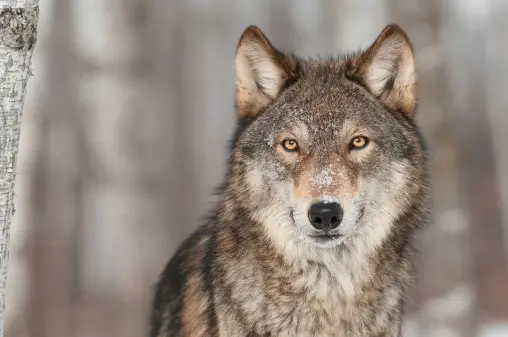Technology has always been a powerful tool for environmental scientists. From the time that early explorers used fire to map the continent, technology has helped us better understand and study our environment. And it’s not just environmental scientists who rely on technology; other researchers use it in their work as well. So how do environmental scientists use technology to track gray wolves?
What is Environmental Science.
Environmental scientists are Scientists who study, investigate and study the effects of environmental change on humans, animals and plants. They use technology to track gray wolves in order to learn more about their ecology, behavior and population size.
How Technology Can Help Environmental Scientists Track Gray Wolves
Technology can be used in a number of ways to help environmental scientists track gray wolves. For example, GPS tracking can be used to determine the location of a wolf in order to better monitor their movements. Additionally, thermal imaging can be used to see how wolves interact with their environment and identify areas that need further research. By using technology to track gray wolves, environmental scientists can gain a better understanding of their ecology and behavior so they may make more informed decisions aboutProtecting their populations.
How to Use Technology to Find Gray Wolves.
Gray wolves are a threatened species and their populations have declined by up to 90%. To help find and protect these Wolves, environmental scientists use technology in a number of ways. One way is to use Geographic Information Systems (GIS). GIS can be used to track wolf movements, occupancy, densities, and other data.
Another way environmental scientists use technology to find gray wolves is through trapping. Traps can be set on cliffs or hillsides to capture movement data from the surrounding area. This data can then be used to identify areas where gray wolves might be living and nesting.
Use Technology to Track Gray Wolves
One of the most important things environmental scientists do when trying to track gray wolves is to keep an open mind. They don’t want to capture any gray wolves and release them into the wild again – this would threaten their survival! Instead, they work with partners who help tranquilize the animals so they cannot roam free again and hurt other animals or humans. This process begins by caravanning around specific areas where there may be concentrations of gray wolfpack members, then setting up traps along those routes in an attempt to catch one or more animals that have recently been sighted near a human encampment or building. Once captures are made, teamsters take the animals back inside for further examination using scientific methods like tracking tags and radio collars (to record what kind of behavior the animal is exhibiting).
Use Technology to Save Gray Wolves
As mentioned earlier, another great way environmental scientists use technology in order to save graywolves is through trapping them. Traps set on cliffs or hillsides can collect movement data from the surrounding area which can then be used for identifying areas where graywolves might be living and nesting. Additionally, satellite imagery can be used to help identify where gray wolves might be living and nesting in the future. This information can then be used to create plans or strategies to try and save these Wolves from extinction.
Use Technology to Protect Gray Wolves
One of the most important things environmental scientists do when trying to protect graywolves is by working with partners who help tranquilize the animals so they cannot roam free again and hurt other animals or humans. This process begins by caravanning around specific areas where there may be concentrations of gray wolfpack members, then setting up traps along those routes in an attempt to catch one or more animals that have recently been sighted near a human encampment or building. Once captures are made, teamsters take the animals back inside for further examination using scientific methods like tracking tags and radio collars (to record what kind of behavior the animal is exhibiting).
Tips for Safe and Successful Tracking of Gray Wolves.
When tracking gray wolves, it is important to use technology to ensure a safe and successful experience. One effective way to do this is through the use of GPS tracking devices. By tracking the wolf’s location, you can avoid collisions or other potential injuries. Additionally, by using electronic tags that record wolf sightings, you can track their movements and protection status over time.
Use Technology to Track Gray Wolves Successfully
Another method oftracking gray wolves is through social media. By sharing sightings and information about the wolf on social media platforms, you can help others track them and protect them from danger. You can also use social media platforms to build relationships with friends and family members who may be able to provide support if necessary. Finally, by using social media platforms to report any sightings of wolves that you believe are in danger, you can help make sure they are reported correctly and that they are not harmed.
Protect Gray Wolves Safely by using Technology
By following these tips for safe and successful tracking of gray wolves, you will help keep them safe and protected while on vacation!
Conclusion
Tracking gray wolves is an important part of environmental science. With the help of technology, environmental scientists can find and save gray wolves. In order to protect these animals, it is important that we use safe tracking techniques and protect them fromhunters. Thanks to the tips in this article, you will be able to track gray wolves safely and successfully.
